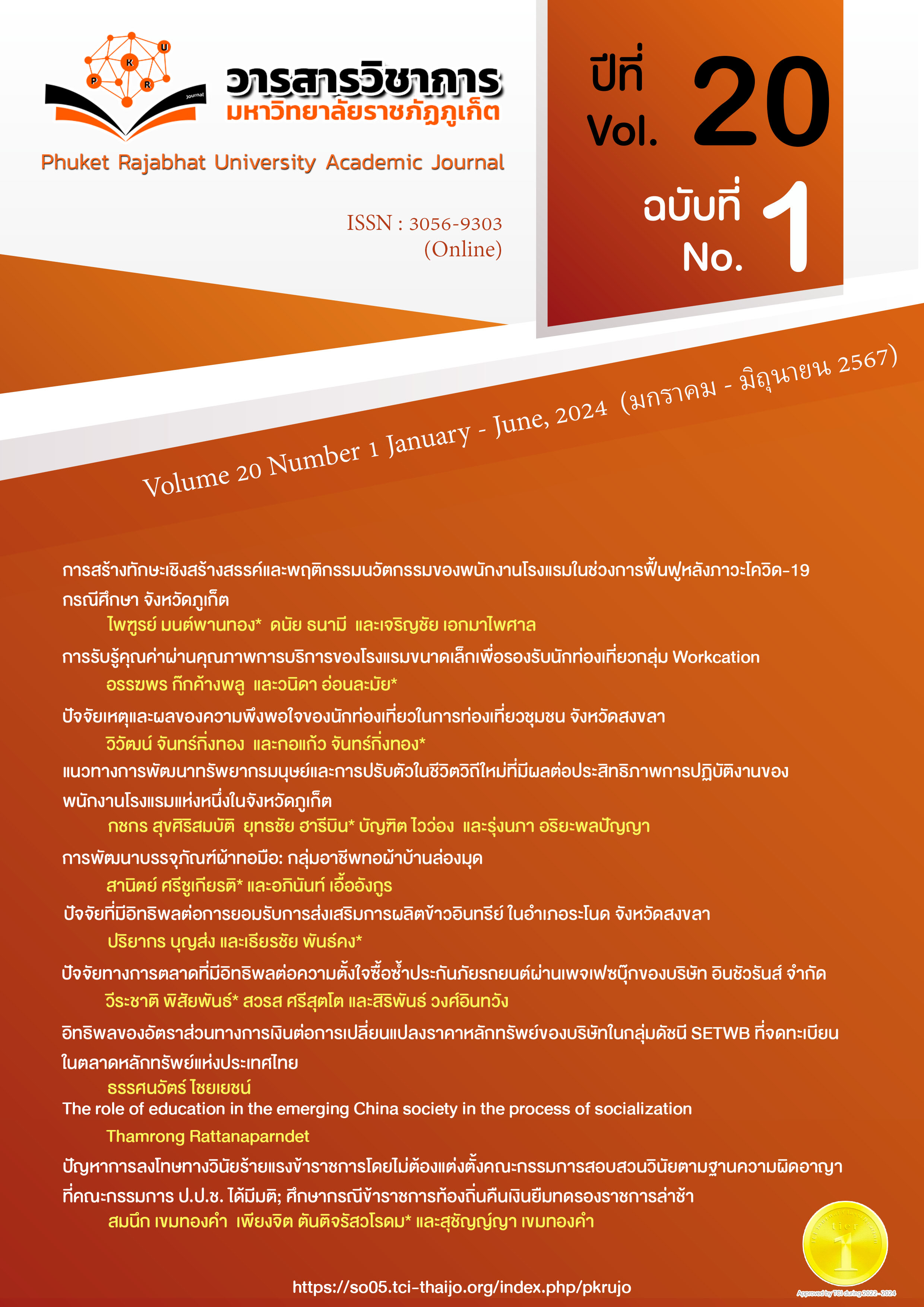Motivational and Behavioral Factors in Driving People to Watch E-Sport Game
Main Article Content
Abstract
This research aimed to examine the factors influencing motivation to watch e-sports in case of League of Legends game. A questionnaire with self-administrative approach was used to collect data from 300 spectators who had watched the League of Legends e-sports game in Thailand. Structural Equation Modelling was used to test the proposed hypotheses. The results found that only achievement of e-sport team had significant and positive impact on the behavioral. Moreover, the behavioral intentions of the behavioral intentions impact the game loyalty. The results of this study also bolster the economic and e-ports benefits to Thailand and create various jobs to people in the community.
Article Details

This work is licensed under a Creative Commons Attribution-NonCommercial-NoDerivatives 4.0 International License.
The content and information published in the Phuket Rajabhat University Academic Journal represent the opinions and sole responsibility of the authors. The editorial board does not necessarily endorse or share any responsibility for these view.
Articles, data, content, images, etc., published in the Phuket Rajabhat University Academic Journal are the copyright of the Phuket Rajabhat University Academic Journal. Any individual or organization wishing to reproduce or utilize all or part of this material for any purpose must obtain prior written permission from the Phuket Rajabhat University Academic Journal.
References
Ajzen, I. (1991). The theory of planned behavior. Organizational Behavior and Human Decision Processes, 50(2), 179–211.
Esports Charts. (2021). Most watched esports disciplines in 2021. Retrieved March 20, 2022, from https://escharts.com/blog/most-watched-esports-disciplines-2021
Funk, D.C., and James, J. (2001). The psychological continuum model: a conceptual framework for understanding an individual’s psychological connection to sport, Sport Manag, 4(2), 119–150.
Hair, J.F., Black, B., Babin, B., Anderson, R.E. and Tatham, R.L. (2010). Multivariate data analysis. 6th ed. Upper Saddle River, NJ.: Pearson Prentice Hall.
Hair, J., Black, W., Babin, B., and Anderson, R. (2018). Multivariate data analysis. Cengage. In
Hamari, J. and Sjöblom, M. (2017). What is eSports and why do people watch it? Internet Research, 27(2), 211-232.
Hsu, C.L., and Lu, H.P. (2004). Why Do People Play On-Line Games? An Extended TAM with Social Influences and Flow Experience. Information & Management, 41, 853-868.
Kim, J., and Kim, M. (2020). Spectator e-sport and well-being through live streaming services: Technology in Society, 63.
Kordyaka, B., Hribersek, S., Kruse, B., and Niehaves, B. (2020). Understanding Brand Loyalty – The Case of the ESports Consumer from a Relationship Quality Perspective. Proceedings of the 4th International GamiFIN Conference 2020, Finland: Levi.
Leckie, C., Nyadzayo, M.W., and Johnson, L.W. (2016). Antecedents of consumer brand engagement and brand loyalty. Journal of Marketing Management, 32(5-6), 558-578.
Ministry of Digital Economy and Society. (2021). “Chaiwut” Supporting Thai Young for an opportunity in E-sport. Retrieved March 20, 2022, from https://escharts.com/blog/most-watched-esports-disciplines-2021www.mdes.go.th/news/detail/5074
Newzoo. (2021). Global Esports Market Report. Retrieved March 20, 2022, from https://newzoo.com/insights/trend-reports/newzoo-global-esports-market-report-2020-light-version/
Oliver, R.L. (1999). Whence Consumer Loyalty. Journal of Marketing, 63, 33-34.
Pizzo, A.D., Na, S., Baker, B.J., Lee, M.A., Kim, D., and Funk, D.C. (2018). eSport vs Sport: A Comparison of Spectator Motives. Sport Marketing Quarterly, 27, 108-123.
Seo, Y. (2013). Electronic Sports: A New Marketing Landscape of the Experience Economy. Journal of Marketing Management, 29(13-14), 1542-1560.
Wei, P.S., and Lu, H.P. (2014). Why do people play mobile social games? An examination of network externalities and of uses and gratifications, Internet Research, 24(3), 313-331.
Yu, B., Bennett, G., and Brison, N. (2019). The Influence of Athlete and Team Loyalty on Sponsorship Effectiveness in eSports. Chicago, IL: Texas A&M University.


